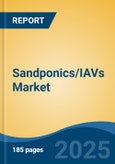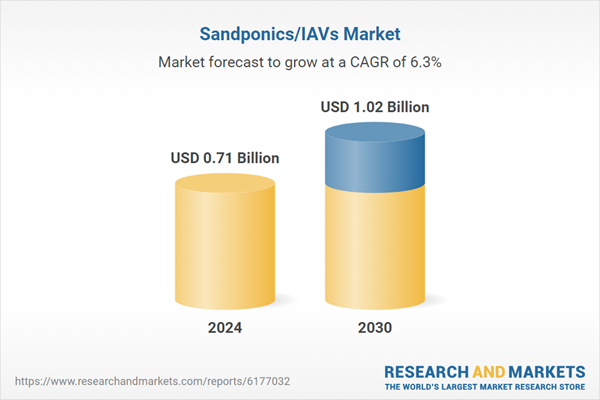Speak directly to the analyst to clarify any post sales queries you may have.
10% Free customizationThis report comes with 10% free customization, enabling you to add data that meets your specific business needs.
Moreover, there are other factors which are bolstering the growth of the sandponics/IAVs market such as growing water scarcity, increasing demand for locally grown produce, growing technological advancements, increasing support from government, and others. According to the recently published Global Report on Food Crisis 2022, around 205 million individuals in 45 nations will encounter acute food insecurity and require immediate assistance.
Key Market Drivers
Water-Smart Circular Farming
Sandponics (Integrated Aqua-Vegeculture using sand beds) creates a water-efficient ecosystem - fish tanks feed nutrients to plant beds, and water continuously recirculates. This model responds directly to global water scarcity. UN-Water reports agriculture consumes roughly 72% of freshwater withdrawals, and about 4 billion people experience water shortages for at least one month annually. UNESCO echoes this, noting agriculture accounts for ~70% of global water use. As a food source, aquaculture contributes over 51% of global seafood production (~94 million tonnes in 2022), per FAO statistics.Governments, particularly in arid and densely populated regions, are drawn to systems like Sandponics: they drastically reduce water use, repackage waste resources, and deliver protein and vegetables simultaneously. Because sand is widely available and easy to source, these systems can be built locally, offering resilience against drought. Climate adaptation and urban food security plans now frequently spotlight such circular, low-emission models. Whether for community farms, school gardens, or municipal hubs, Sandponics aligns with public priorities - providing an efficient, sustainable, and aligned response to water stress and food access concerns.
Key Market Challenges
Regulatory Maze Across Multiple Sectors
Sandponics blur traditional categories - it's simultaneously agriculture, aquaculture, and (in effect) water recycling. But regulatory frameworks remain siloed: fish production requires aquaculture permits, produce must meet food-safety standards, irrigation and plumbing are separately governed, and environmental agencies regulate nutrient and water discharge.Neither UN-Water nor UNESCO have yet produced integrated guidelines covering such hybrid systems, meaning each project must individually seek permits and approvals across multiple agencies. This slows procurement, particularly for public or funded pilot programs. Vendors often must supply compliance documentation for building codes, food safety (e.g., HACCP-style logs), biosecurity, plumbing, and environmental discharge on a case-by-case basis. Until standards evolve to encompass integrated systems, this regulatory complexity remains a major barrier to streamlined adoption and scalability.
Key Market Trends
Public Pilots in Urban & Arid Landscapes
Many cities and municipalities are now subsidizing Sandponics pilot sites - community gardens, school farms, or rooftop greenhouses - especially in drought-prone or food-insecure areas. FAO’s SOFIA (2024) underscores aquaculture’s increasing role in sustainable nutrition, while UN-Water continues to emphasize irrigation challenges.These pilot programs showcase integrated systems that both feed communities and improve water use efficiency. Their success depends on measurable outcomes: water savings, nutrient capture, food output. Projects with built-in dashboards and audit reports are most attractive to policymakers seeking scalable, high-impact investments. As climate-aware urban planning becomes widespread, Sandponics pilots stand to gain funding and expansion opportunities across sectors.
Key Market Players
- Sandponics Jordan
- Sumitomo Electric Industries, Ltd.
- Kiwa
- Agritecture
- Sandponic Egypt
- MyAquaponics PTY Ltd
- AQ&SA ponics Es
- HydroGarde
- GrowUp Urban Farms
- Practical Aquaponics
Report Scope:
In this report, the Global Sandponics/IAVs Market has been segmented into the following categories, in addition to the industry trends which have also been detailed below:Sandponics/IAVs Market, By Produce:
- Fruits & Vegetables
- Fishes
Sandponics/IAVs Market, By Application:
- Commercial
- Residential
- Others
Sandponics/IAVs Market, By Region:
- North America
- United States
- Mexico
- Canada
- Europe
- France
- Germany
- United Kingdom
- Italy
- Spain
- Asia-Pacific
- China
- India
- South Korea
- Japan
- Australia
- South America
- Brazil
- Argentina
- Colombia
- Middle East and Africa
- South Africa
- Saudi Arabia
- UAE
Competitive Landscape
Company Profiles: Detailed analysis of the major companies present in the Global Sandponics/IAVs Market.Available Customizations:
With the given market data, the publisher offers customizations according to a company's specific needs. The following customization options are available for the report.Company Information
- Detailed analysis and profiling of additional market players (up to five).
This product will be delivered within 1-3 business days.
Table of Contents
Companies Mentioned
- Sandponics Jordan
- Sumitomo Electric Industries, Ltd.
- Kiwa
- Agritecture
- Sandponic Egypt
- MyAquaponics PTY Ltd
- AQ&SA ponics Es
- HydroGarde
- GrowUp Urban Farms
- Practical Aquaponics
Table Information
| Report Attribute | Details |
|---|---|
| No. of Pages | 185 |
| Published | September 2025 |
| Forecast Period | 2024 - 2030 |
| Estimated Market Value ( USD | $ 0.71 Billion |
| Forecasted Market Value ( USD | $ 1.02 Billion |
| Compound Annual Growth Rate | 6.2% |
| Regions Covered | Global |
| No. of Companies Mentioned | 10 |









